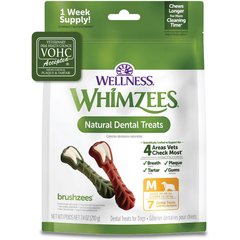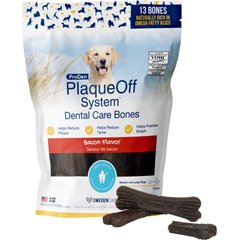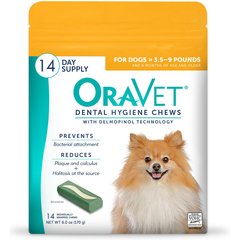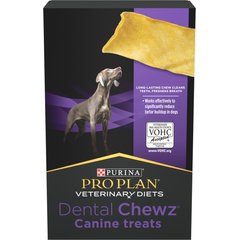Can Dogs Eat Bones?
Robert Daly/iStock/Getty Images Plus via Getty Images
NOTE: Always check with your veterinarian before giving your dog any new foods, especially “people foods.” What might be OK for one dog might not be good for your dog, depending on multiple factors such as their age, health history, health conditions, and diet. Dogs on prescription diets should not be fed any food or treats outside the diet unless your veterinarian tells you it’s fine to do so.
We've seen it in cartoons, dogs gleefully chomping on big, juicy bones like it’s the ultimate treat. But in real life, can dogs eat bones, or is it a recipe for disaster?
While it may seem natural to toss your pup a leftover bone, dogs should not have bones.
Can Dogs Have Bones?
It is not recommended to give dogs bones of any kind. That includes both cooked bones and raw bones.
-
Cooked bones: Cooked bones splinter more easily than raw bones, so they can present a choking hazard and break into small shards that can pierce the digestive tract.
-
Small bones: Small bones come with higher risks because it’s easier for your dog to choke on them.
-
Round bones: Your dog is also more likely to choke on round bones that can get stuck in their windpipe. Round bones can also get stuck around the lower jaw and may require vet removal.
Why Are Bones Bad for Dogs?
While bones are not toxic, they do come with some serious risks, including:
-
They can be a choking hazard. Small bones can get stuck in your dog’s esophagus, presenting a choking hazard. Larger bones can also break and splinter into smaller pieces that increase the risk of choking.
-
They can cause intestinal damage. Bones can break into smaller, sharp pieces that can perforate the intestinal tract, causing serious damage. They can also get stuck in the intestines, causing an intestinal obstruction.
-
They can cause dental trauma. Bones are tough on your dog’s teeth and can contribute to dental trauma, like tooth chips or fractures, or cuts in the mouth or cheeks.
-
They come with a risk of foodborne illness. Raw bones can come with the risk of foodborne illness, especially if there’s still meat attached to the bone and the bone hasn’t been properly temperature-controlled. And when these germs spread around your home, you and your family can get sick, too.
Are Bones Good for Dogs?
While bones can have some nutritional benefit—the meat or connective tissue still attached to the bone provides some essential nutrients, including calcium, protein, and collagen—the risks, including damage to a dog’s teeth and digestive system, do not justify any nutritional benefits.
What To Give Your Dog Instead
For dogs who love to chew, opt for dental chews. Not only do dental chews help keep your pup busy, but they can also help support good oral health.
Just be sure the chew has the Veterinary Oral Health Council (VOHC) seal of acceptance; this lets you know that your dog’s dental chew is both safe and effective.
Here are some dental chews with the VOHC seal:
Recommended Products
After giving your dog a chew, it’s important to always supervise them. Monitor the activity and take the chew away if it breaks or your dog starts to have trouble. Chews can be dangerous if large pieces are swallowed.
If you ever suspect your dog has ingested a large piece, take them to the vet as soon as you can. This can quickly become an emergency, so it’s better to be safe than sorry.
Can Dogs Eat Bones FAQs
Can dogs eat chicken bones?
No, dogs should not eat chicken bones because they're hollow, and hollow bones tend to break and splinter more easily. This can cause internal bleeding and intestinal obstruction. Raw chicken bones can cause injury to the mouth, and it can lead to or transmit E.coli or other bacterial infections.
Can dogs eat pork bones?
No, dogs should not have pork rib bones. Pork bones, both cooked and raw, can be dangerous to dogs. Cooked pork bones can splinter easily and become a choking hazard, while raw pork bones can lead to bacterial contamination (e.g., salmonella), making your dog ill.
Can dogs eat rib bones?
No, dogs should not have rib bones. Rib bones—whether pork, beef, or other types—are prone to splintering and can cause serious issues like choking, broken teeth, internal injuries, or blockages.
Can dogs eat turkey bones?
No, dogs cannot eat turkey bones. Both cooked and raw turkey bones can splinter, leading to choking, punctures, or intestinal blockages.




